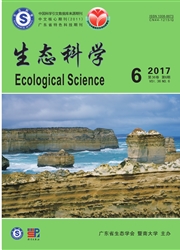

 中文摘要:
中文摘要:
选取水体中广泛存在的壬基酚为代表,研究其对四尾栅藻生理特性及群体形成的影响。实验设置6个暴露组(0.63、1.02、1.65、2.67、4.32和7.00 mg·L-1)和1个对照组(0 mg·L-1),测定了96 h内四尾栅藻细胞密度、叶绿素a含量、胞外多糖合成、最大光能转化效率(Fv/Fm)以及群体形态等变化。结果表明,四尾栅藻起始细胞密度6.64×10^5 cells·m L-1下,壬基酚对四尾栅藻细胞密度的EC50为2.05 mg·L-1;随着壬基酚质量浓度的提高,四尾栅藻的叶绿素a含量和Fv/Fm下降,四尾栅藻的生长受到抑制,但细胞胞外多糖含量增多,导致细胞间黏性增强,同时双细胞和多细胞(≥3个)群体占总细胞比例上升。
 英文摘要:
英文摘要:
In order to study the physiological effect of nonyl phenol(NP) on fresh algae, Scenedesmus quadricanda was exposed to NP at six concentrations(0.63, 1.02, 1.65, 2.67, 4.32, and 7.00 mg·L-1), and 0 mg·L-1 of NP was the control. Its cell density, chlorophyll a content, maximum light conversion efficiency(Fv/Fm), extracellular polysaccharide and cell morphology were measured after exposuring to NP for 96 hours. Results showed that the EC50 of NP to Scenedesmus quadricanda was 2.05 mg·L-1 when the initial cell number was 6.64×10^5 cells·m L-1. With an increase of NP level, the chlorophyll a content and Fv/Fm of microalgae decreased, but the growth of Scenedesmus quadricanda was inhibited and the extracellular polysaccharide content and colony formation were promoted, which would help colony formation and maintainance.
 同期刊论文项目
同期刊论文项目
 同项目期刊论文
同项目期刊论文
 Growth effects on mixed culture of Dunaliella salina and Phaeodactylum tricornutum under different i
Growth effects on mixed culture of Dunaliella salina and Phaeodactylum tricornutum under different i Allelopathic interactions between the red-tide causative dinoflagellate Prorocentrum donghaiense and
Allelopathic interactions between the red-tide causative dinoflagellate Prorocentrum donghaiense and 期刊信息
期刊信息
